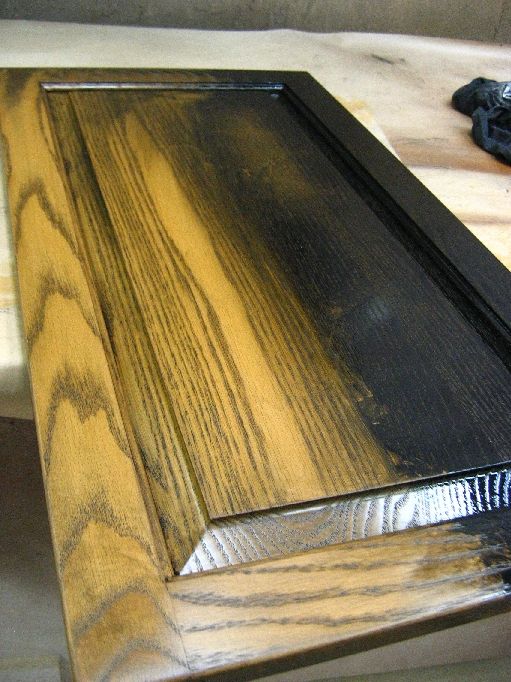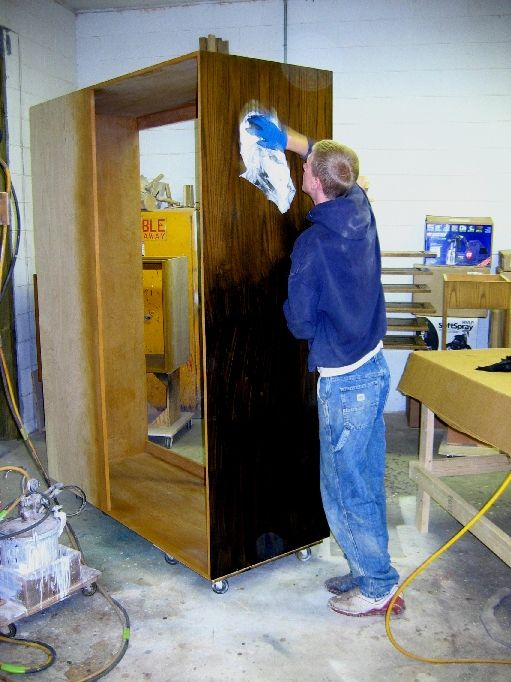Question
I posted earlier about having trouble with the oil glaze I am using drying too fast. I resprayed with a gloss white lacquer and let it dry. When I glaze over the gloss white finish, the glaze is still drying too fast. The rep where I bought the glaze told me to thin it with mineral spirits. I tried that and it still seems to be drying fast. He also said to use a cloth with a little mineral spirits on it to wipe off the glaze. When I do this, it takes off too much glaze. Any suggestions?
Forum Responses
(Finishing Forum)
From contributor R:
A few drops of linseed oil will slow it down for you. Just be sure to let it dry thoroughly before topcoating.
Also, if you only want to pinstripe the profiles, they have guns for that. I originally purchased a glazing gun from CAT but found that the 250 dollar gun was a Chinese import that had interchangeable parts with my 20 dollar mini guns and a few added tips. I later found that Asturo had a similar gun for about 150 dollars that is the real deal. Higher quality parts and you can pinstripe a door in minutes.
Think back to the late 1960's when you could buy those hideous glazing kits at the hardware store. They came with a base color, a hunk of cheese cloth, and another color you were supposed to apply over the basecoat once it had dried. Thanks to those days, us refinishers were slammed with more business than we knew what to do with in the 1980's. People were buying those home glazed pieces of furniture at flea markets and garage sales and having them professionally refinished. Ah, the good-ol-days.
Back in your posting prior to Christmas, I mentioned the possibility of you experimenting with mixing your own glaze. I did add in that post that besides an empty can, some paint thinners and a color, you do need a bit of linseed oil.
As others have mentioned, the linseed oil extends the working time of the glaze, but too much linseed oil will certainly cause adhesion problems, so be careful of how much you add.
I have a strong feeling that since your objecting to the glaze drying to fast, it most likely has lacquer thinner or acetone in it.
Finishers have been applying a glaze over most any type of coating ever since water was deemed a liquid, so it won't matter what you apply it over, be it a conversion varnish like you used in the past shop or the white lacquer you're presently using.
Just for shits and giggles, forget the glaze you're now using. Put 3/4 of a cup of pigment (any color) into a quart of paint thinner and stir the dickens out of it. Put two tablespoons of linseed oil into the mix and stir it up real good. Try that glaze on one of your shelves or doors and compare the results to the store bought stuff you're now using. See if you don't find the homebrew user friendlier than the Camgers stuff.
One technique that I've found valuable is to reduce the glaze with mineral spirits until its viscosity is thin enough to spray. Then I spray a light wet coat on the piece being glazed and wipe the excess. The wiping technique takes a little practice and finding a workable speed is part of the process.
Here's a picture of a raised panel door being glazed (to accentuate the pores) using this technique.

Here's a picture of the cabinet being glazed. With the right technique, you can glaze large surfaces before it dries too much.

If you still need a reducer that evaporates even slower than mineral spirits, you can use R1K140 naphtha from Sherwin Williams - it's about 50% slower. If you need a really slow reducer, use just a little (e.g., .5%) R7K323 from Sherwin Williams. It's an aliphatic dibasic ester blend that evaporates about 10 times (1000%) slower than mineral spirits. It doesn't take much of this to give you a lot of working time.
Pour your glaze into the bottle and once you have screwed the cap back on, snip off a small amount of the tip .This is a simple and cheap way to apply glaze to the areas you want to.
To answer the question about color, get some UTC pigment or a couple tubes of artist's oil colors. It doesn't matter what color you get, just get an oil based concentrate for experimental purpose.